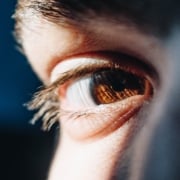How Glaucoma Progresses and the Importance of Early Treatment
Glaucoma, often referred to as the ‘silent thief of sight,’ is a serious eye disease that damages vision gradually. Without early intervention, its effects can become permanent.At Maehara Eye Surgery & Laser in Honolulu, HI, Dr. Dennis Maehara, founder of the clinic over 30 years ago, and his son, Dr. Jeffrey Maehara, a board-certified Anterior Segment-Glaucoma Specialist, provide cutting-edge glaucoma care tailored to each patient.
Using advanced technology and a patient-centered approach, the Maehara team is dedicated to helping preserve vision and improve quality of life. Understanding how glaucoma progresses and the importance of early treatment is crucial to protecting your eyesight for years to come.
What is Glaucoma?
Affecting the optic nerve, glaucoma disrupts the critical pathway that transmits visual information from the eyes to the brain. It’s often caused by increased pressure within the eye, though it can also occur with normal eye pressure. Without treatment, this damage can lead to gradual, irreversible vision loss.
Glaucoma is particularly concerning because symptoms typically appear only after significant damage has occurred. That’s why routine eye exams are critical—early detection is the key to preserving vision.
The Glaucoma Timeline
The progression of glaucoma happens in stages:
- Early Stage: During this stage, glaucoma often has no noticeable symptoms. However, the optic nerve may already be experiencing damage. Routine eye exams are crucial, particularly for individuals over 40 or those with a genetic predisposition to glaucoma.
- Middle Stage: Vision loss begins to occur, typically starting with peripheral vision. Without treatment, the damage accelerates, potentially impacting daily activities.
- Late Stage: Severe vision impairment or blindness occurs if glaucoma remains untreated. At this stage, lost vision cannot be restored.
Each stage underscores the importance of early detection and treatment to prevent further damage.
The Importance of Early Glaucoma Treatment
Fortunately, glaucoma treatment can slow or stop the progression of the disease. Offering a personalized approach, Maehara Eye Surgery & Laser in Honolulu ensures each patient receives the right care. Potential treatments include:
- Medications: Eye drops or oral medications to reduce eye pressure.
- Laser Therapy: Minimally invasive procedures to improve fluid drainage.
- Surgical Treatment: Advanced surgical techniques to control eye pressure.
With early intervention, these treatments can preserve vision and improve quality of life.
Don’t Wait to Protect Your Vision in Honolulu, HI
Protecting your vision starts with a simple step: scheduling a consultation. At Maehara Eye Surgery & Laser, our experienced team is committed to providing cutting-edge glaucoma treatment and compassionate care.
Now is the time to act—glaucoma’s progression doesn’t stop, but expert care can help maintain your vision. Contact us today at 808-955-3937 to schedule your consultation and safeguard your vision for the future.











